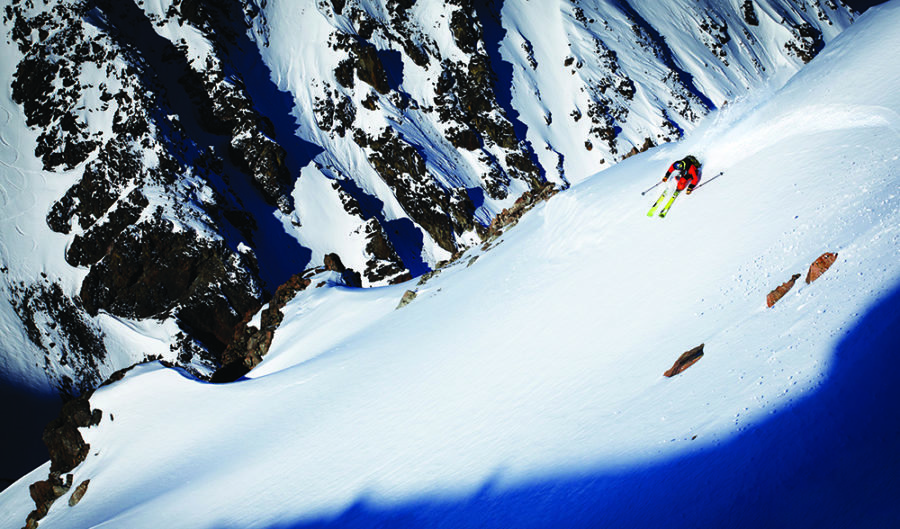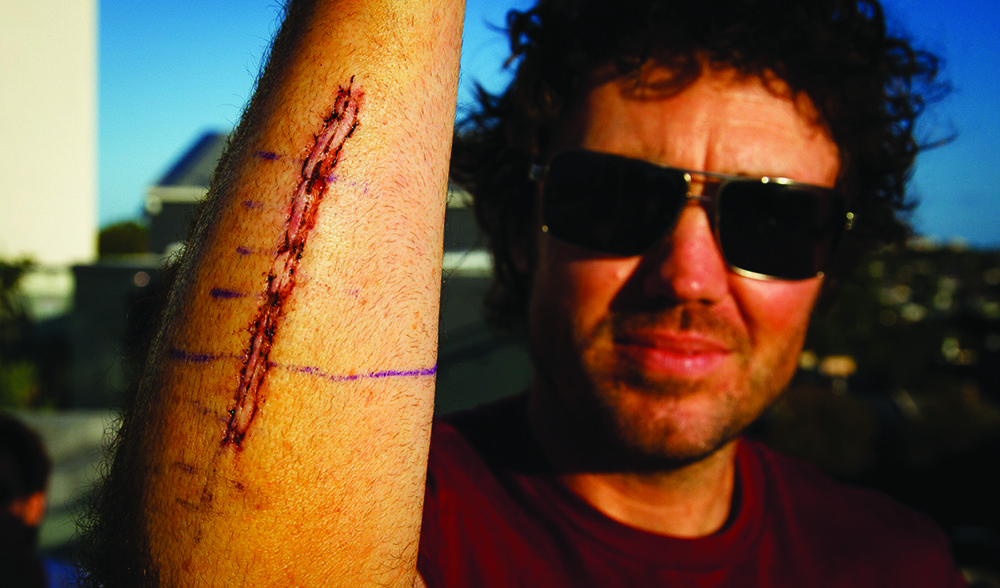Under cover: understanding ski insurance

IT WAS IN Utah a couple of years ago and on a day of glorious New Year powder, thigh deep and dry, when, thanks to an abrupt change in circumstances, three questions ran through my mind. The first was not ‘have I broken any bones?’, but rather, ‘which bones have I broken?’, because the change in circumstances was that the powder I had been skiing was no longer soft. Instead, I had slammed full tilt into a rock the size of minivan.
I had had not the slightest inkling of the rock. Hidden under the snow, the first I knew of it was the moment of impact. There had been no loss of control, no sense of impending doom or a train wreck about to happen; instead, it was rather like the manner in which a bug makes an acquaintance with your windscreen. My situation was perhaps not as dire as the aforementioned bug; nonetheless, unquestionably bones had been broken. It was merely, as I have said, a matter of which ones.

Image: James McCormack
The second question, when it became apparent that the answer to the first question was both arms, was, ‘how am I going to wipe my bum?’.
And the third question, given all I knew about the American healthcare system, was , ‘is this going to send me broke?’.
It turned out the second was far easier to answer than third, because after surgery and a couple of nights in hospital, the bills kept rolling in. It started at $4000. That soon climbed to $12,000… then $17,000… then $23,000.
But one question I did not need to ask was who would pay for it. I was insured. But most skiers in my situation would not have been, even if they’d taken out insurance, because I was off-piste. Now, you may think you’ve been all smart and organised and prepared by forking out for travel insurance, and that that means you’ll be covered. Chances are, however, it won’t, as you’ll find out if you delve down deep into all those tedious terms and conditions – it’s here that you’ll find several clauses that most travel insurance companies don’t tend to highlight.
In most cases, those clauses are strict: no skiing. Full stop. Unless, that is, you pay extra for their specific winter sports coverage. But don’t think that paying this additional premium is the end of the story, because a reading of the fine print reveals the majority of premiums only cover you on-piste. And unless you are a rank beginner, you’re unlikely to stick solely to the trails when all the powder lies off them. Legally speaking – and trust me, if something actually happens to you, legalese is exactly the language insurance companies will use with you – you could be just a few metres off-piste and you no longer have coverage.
True, a few insurers do allow off-piste, but again for most, you guessed it, there’s a caveat: as long as you’re with a professional guide. Yeah, right, you’re gonna hire a guide to head over to those half-dozen untracked turns you’ve spied over in the trees?
The number of insurers who let you ski independently off-piste are very few indeed. And that’s before you throw in the final hurdle: you want not only to head off-piste but to go beyond a resort’s boundaries and into the backcountry. Independently, at that. Or you want to go heli-skiing. And now we are looking at very few companies indeed. In fact, a recent Google search for “ski insurance” did not turn up one company in the first two pages of hits that actually covered you for all off-piste and backcountry skiing, even if you forked out extra for their so-called “snow packs”. There were a couple that came close, but even then they had other conditions, like only covering you from mid-December until 31 March, or not covering search and rescues.
Just before I went on my trip to Utah, I’d been lucky/tenacious/pigheaded enough not to give in. I spent night after night wading through the Product Disclosure Statements of dozens of insurers, combing through the fine print. In short, I found just three who’ll cover you for off-piste, backcountry and heli-skiing: QBE, IHI Bupa, and AAMI. But QBE requires you to purchase a winter Snow Pack to get coverage, and IHI Bupa – who I was with that day in Utah, and, I must say, were great – is technically not even necessarily travel insurance, because you can purchase their medical-only component.
The clear winner however is AAMI. For less than IHI’s medical-only premium, AAMI’s standard travel insurance will cover you. There’s no need to purchase a special winter premium, and there are no caveats, and no tricky clauses. There’s just
one exception: that you’re not engaging in competitive skiing.
So if you’re heading over to chase Northern Hemisphere pow this upcoming winter, and you want to cover yourself from medical bills potentially taking your house, shirt, undies and every last item you have, save yourself a week of farting about trying to figure out which insurer will cover you and just start with AAMI. Now, perhaps some other equally favourable insurer exists that I haven’t yet stumbled upon in my many nights of internet research, but of the dozens I had checked out, AAMI was seriously head and shoulders above the rest. It’s rare in this day and age of competition that it can be so cut and dried.

